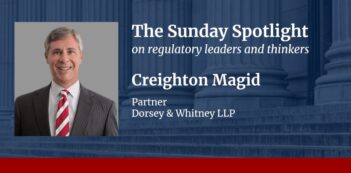
The recent nullification of environmental regulations by a federal court sets a dangerous precedent.
How aggressive should courts be in reversing environmental regulations?
That question has renewed significance in the wake of this summer’s U.S. Supreme Court decision using a controversial theory to declare unlawful the Obama Administration’s signature climate regulation, the Clean Power Plan. If you are concerned about the Supreme Court’s decision, you should also be worried about a little-noticed development in the lower courts that poses significant short-term and long-term threats to conservation.
Last month, a federal district court in California voided three Endangered Species Act regulations issued by the Trump Administration. Although environmental advocates typically celebrate decisions against former President Donald J. Trump as a win for conservation, in this case that would be a mistake. The implications of the district court’s decision are alarming.
One ominous concern is the basis of the court’s decision. The court did not consider the details of these regulations nor determine that they were unlawful. Instead, the court asserted it has wide discretion to void regulations issued under a former president whenever a new administration with different priorities has expressed interest in revisiting them. This decision, and recent decisions like it, set a dangerous precedent.
The court’s slash-and-burn approach to nullifying federal regulations directly harms wildlife. The three voided regulations covered a lot of ground. When the rules were issued, the Environmental Policy Innovation Center, an organization committed to environmental conservation, reported that the rules contained 33 discrete changes, more of which could benefit conservation than would undermine it. Yet the court erased all these changes, including the beneficial ones, with little or no explanation.
One of the changes, for instance, improved incentives to help imperiled wildlife populations. The Endangered Species Act can restrict the use of private land containing rare species and their habitats, in effect making them liabilities for landowners. Under President Barack Obama, the U.S. Fish and Wildlife Service took steps to improve this dynamic by tailoring regulations for threatened species, which are at less risk than endangered species, to the specific needs of the species. In 2019, the Trump Administration formalized this shift in its threatened species final rule, which required tailored regulations for threatened species to become less burdensome on private landowners as species recover.
Although reducing regulation to help species recover may seem counterintuitive, research by the Property and Environment Research Center has shown that this approach better aligns the incentives of landowners with the interests of species. The logic behind this change is simple: If landowners are rewarded with reduced regulation when a species improves from endangered to threatened, they are more likely to restore the habitat and invest in other recovery efforts.
By voiding the threatened species rule, the court eliminated these incentives and restored the agency’s prior approach of treating endangered and threatened species the same despite differences in their threats and needs. The consequences of this step backward are clear. During the 40 years the Fish and Wildlife Service followed this one-size-fits-all approach, fewer than 3 percent of all endangered and threatened species have successfully rebounded, leaving 97 percent at continued risk of extinction.
The decision further threatens conservation in the long run by eroding key safeguards for how environmental agencies and courts review regulations. Ordinarily, a court strikes down agency regulations only if they violate a constitution or statute, missed a required procedural step, or are otherwise unlawful. Imagine, however, if this Supreme Court could have simply said it does not like the Clean Power Plan and then voided it. Judges exercising such raw power would be a far more dangerous threat to the environment than judges constrained to applying the law as they see it.
The Trump Administration spent years retracting Obama-era regulations through the rulemaking process. This approach allowed the public to comment on policy shifts and allowed opponents to challenge procedural and substantive errors. But if courts can simply wipe away regulations at their discretion, it will have profound effects on how environmental agencies behave. According to the Institute for Policy Integrity at the New York University School of Law, judicial intervention led to significant setbacks to President Trump’s agenda, with the administration winning a mere 6 percent of cases against it.
How different might the world be today if the Trump Administration could instead have simply found a friendly judge willing to cast aside President Obama’s regulations? Is there any doubt that, if this precedent stands, future administrations will use it against President Biden’s regulations?
To its credit, the Biden Administration opposed the district court voiding these endangered species regulations in this way. Given what is at stake, the Administration should stand on principle and appeal the decision. Whatever short-term political benefit it may receive from President Trump’s regulations being struck down will be swamped by the long-term threat this precedent poses to the Administration’s interests and to the environment.




